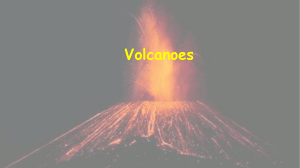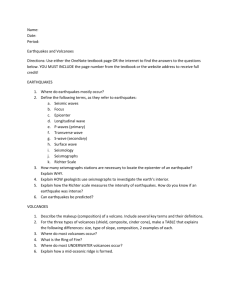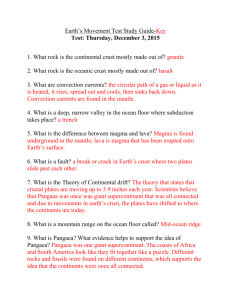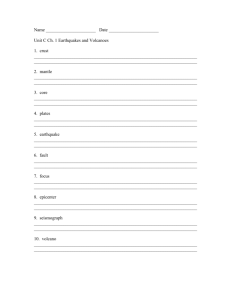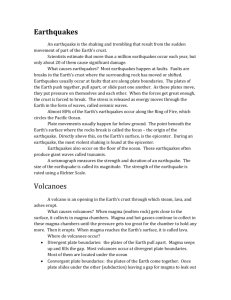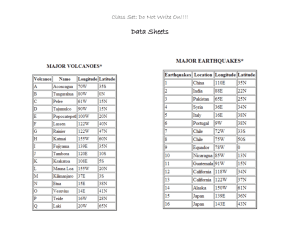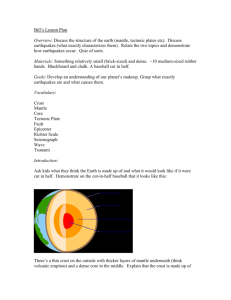using seismographs, the Mercalli scale, or the Richter
advertisement
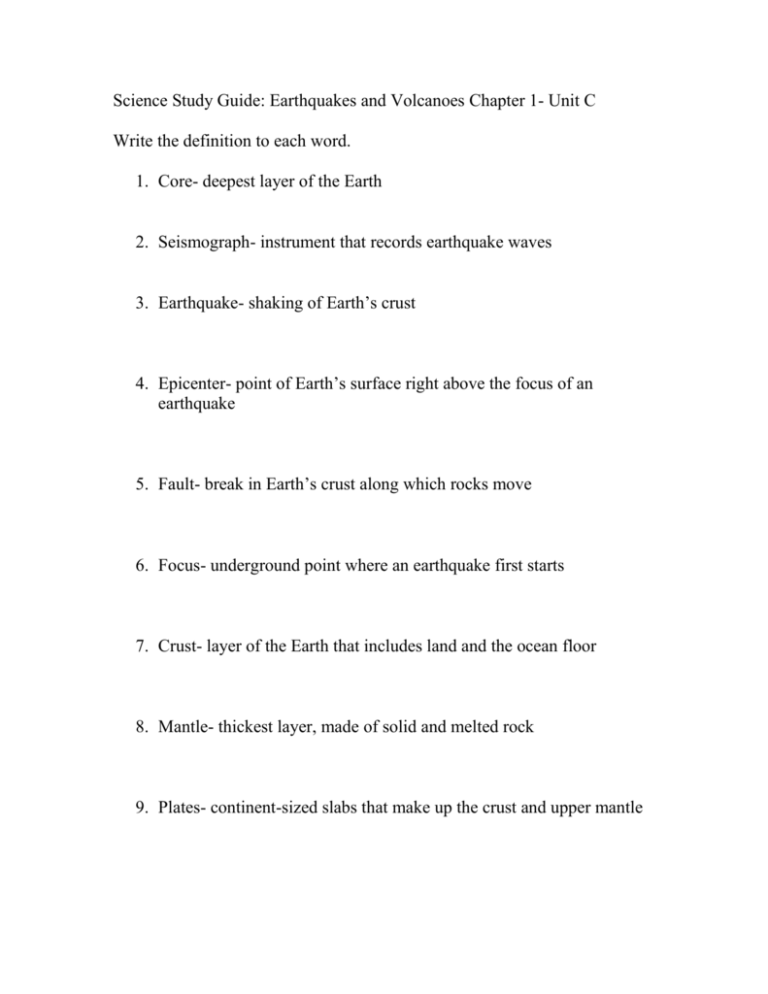
Science Study Guide: Earthquakes and Volcanoes Chapter 1- Unit C Write the definition to each word. 1. Core- deepest layer of the Earth 2. Seismograph- instrument that records earthquake waves 3. Earthquake- shaking of Earth’s crust 4. Epicenter- point of Earth’s surface right above the focus of an earthquake 5. Fault- break in Earth’s crust along which rocks move 6. Focus- underground point where an earthquake first starts 7. Crust- layer of the Earth that includes land and the ocean floor 8. Mantle- thickest layer, made of solid and melted rock 9. Plates- continent-sized slabs that make up the crust and upper mantle Fill in the blank with the correct word or words. 10.Earth’s plates move very slowly across Earth’s surface on a thin layer of partly melted mantle. 11.Earth’s core is its hottest layer. 12.Scientists can measure earthquakes by using seismographs, the Mercalli scale, and the Richter scales. 13.Different kinds of eruptions form different kinds of volcanic mountains. 14.Some volcanoes form new ocean floor as plates move apart and magma rises to the surface of the crust. 15.California has more than 20,000 earthquakes each year because there is a large fault running through the state. Write each short answer in complete sentences. 16.The 1964 earthquake in Alaska released more energy than the 1989 Loma Prieta earthquake in California. How do you think scientists know this? Explain. By measuring the two earthquakes, scientists could compare the amounts of energy the earthquakes released. (using seismographs, the Mercalli scale, or the Richter scale) 17.The group of volcanoes in the Pacific Ocean basin are known as the Ring of Fire. Why is this a good name? What do you think causes the volcanoes in this ring? Ring of Fire is a good name because of the large number of volcanoes there. The plates moving toward each other cause the edges of one plate to be pushed down into the mantle, where it partly melts. Magma rises through vents all around the edges of the Pacific Plate, forming the volcanoes. 18.If Earth’s plates stopped moving, what might happen? There would be no more earthquakes and no new volcanoes or mountains. *You will need to label a picture of a volcano: lava, magma chamber, crater, magma, and vent.

